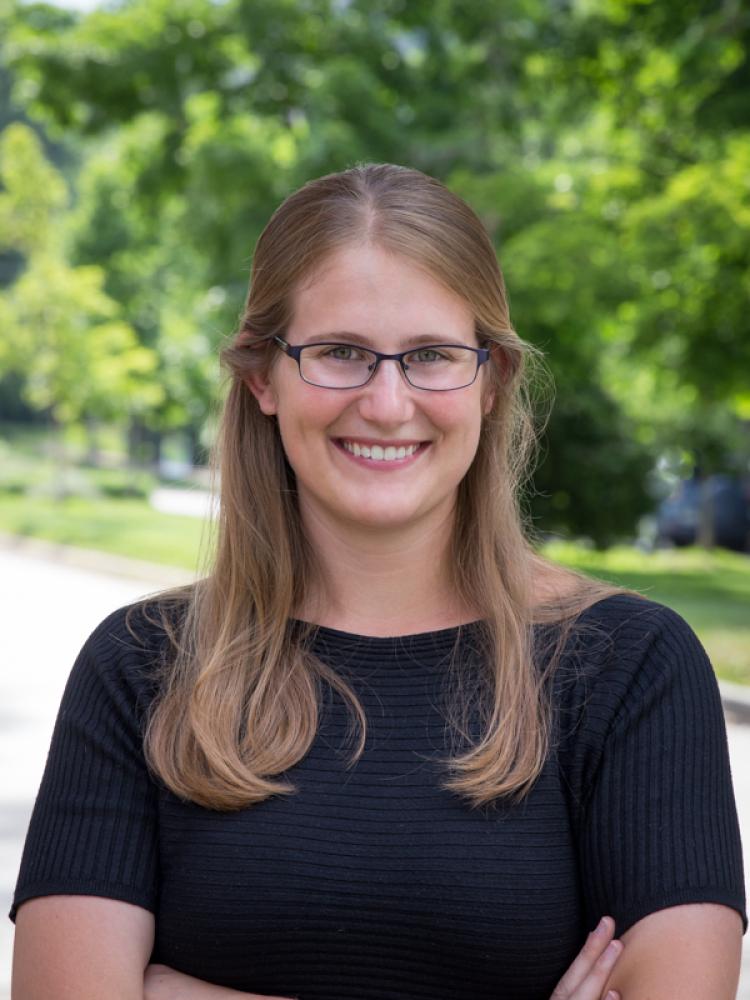New professor’s research could shape water use in West

Korak’s research interests are broadly focused on water treatment engineering.
After a stint at the Bureau of Reclamation working on several once-in-a-lifetime type projects in the west, Julie Korak is back at CU Boulder as an assistant professor in the Civil, Environmental and Architectural Engineering Department.
The switch to academia will surely provide some challenges, but Korak is deeply familiar with the department having earned two bachelor’s degrees, a master’s and a PhD from the College of Engineering and Applied Science from 2004 to 2014.
“I think the term they use for me is a ‘lifer,’” she laughed.
Korak’s research interests are broadly focused on water treatment engineering, spanning municipal drinking water, water reuse and industrial water treatment. A licensed professional engineer in Colorado, she earned her PhD in civil and environmental engineering in 2014 before heading off to work in the Water Treatment Group at the Bureau of Reclamation in Denver.
Her work there focused on water treatment processes related to drinking water, agricultural drainage and managing the waste from these treatment processes across the west. For many projects, she worked with small communities, including Native American nations, to solve local water treatment challenges.
She said the work her group was involved in was unique in the larger field of water treatment and research as a whole.
“The group got to focus on research-oriented projects as well more traditional engineering design type work. We got to work on a lot of projects that are in between the two – not just lab-scale research projects that could end up in a journal, but research that may influence how a specific utility makes treatment decisions in the near future,” she said.
One example of her group’s work centered on California’s decision to pass a regulation for chromium in drinking water that was more stringent than the current federal regulation. Korak joined a team that had experience in ion exchange processes that remove inorganic contaminants like chromium from groundwater and managing the waste that comes from that process.

Julie Korak
Korak also worked on the Navajo Gallup Water Supply Project, a large infrastructure initiative in New Mexico that will supply drinking water to the Navajo Nation and neighboring communities. Her role in that project looked at how the geology, historical mining activities and weather events in southwest Colorado impacted water quality in the San Juan River during heavy rain events.
Korak said her research at CU would focus primarily on three areas: inorganic contaminant removal in water sources, water reuse and aging water infrastructure systems. Potential projects across those areas includes how to treat water for specific uses, like agriculture and thermoelectric power generation, and how to develop sustainable water treatment systems for small communities with impaired water sources due to naturally occurring constituents above regulatory levels. That is important work in a place like Colorado, which is increasingly water stressed and seeing a growing population, forcing stakeholders to consider different water sources that were previously off the table to diversify their water portfolios.
“One of the challenges we face with more demand for water is that we have to make use of water sources that may be just above some threshold for potable or agricultural use due to something like arsenic that is naturally occurring,” she said. “My work looks to develop treatment systems to make that water serve a beneficial purpose now.”
Korak said CU Boulder is also a great place to explore these questions because of the availability of collaborators in the field. Not only is the university well connected to outside groups in the area like the U.S. Geological Survey and the Water Research Foundation, there is a growing push for collaboration within the college through the Water Energy Interdisciplinary Research Theme. Korak joined that group this semester and said it was a great networking opportunity.
“There are so many people on campus that have similar research interests, but different strengths. Having those networking opportunities really gives us space to collaborate and find projects that can get the ball rolling towards something bigger,” she said. “That’s very appealing.”

